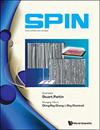On Connectivity in Random Graph Models with Limited Dependencies
IF 1.3
4区 物理与天体物理
Q4 PHYSICS, APPLIED
引用次数: 0
Abstract
For any positive edge density $p$, a random graph in the Erd\H{o}s-Renyi $G_{n,p}$ model is connected with non-zero probability, since all edges are mutually independent. We consider random graph models in which edges that do not share endpoints are independent while incident edges may be dependent and ask: what is the minimum probability $\rho(n)$, such that for any distribution $\mathcal{G}$ (in this model) on graphs with $n$ vertices in which each potential edge has a marginal probability of being present at least $\rho(n)$, a graph drawn from $\mathcal{G}$ is connected with non-zero probability? As it turns out, the condition ``edges that do not share endpoints are independent'' needs to be clarified and the answer to the question above is sensitive to the specification. In fact, we formalize this intuitive description into a strict hierarchy of five independence conditions, which we show to have at least three different behaviors for the threshold $\rho(n)$. For each condition, we provide upper and lower bounds for $\rho(n)$. In the strongest condition, the coloring model (which includes, e.g., random geometric graphs), we show that $\rho(n)\rightarrow 2-\phi\approx 0.38$ for $n\rightarrow\infty$, proving a conjecture by Badakhshian, Falgas-Ravry, and Sharifzadeh. This separates the coloring models from the weaker independence conditions we consider, as there we prove that $\rho(n)>0.5-o(n)$. In stark contrast to the coloring model, for our weakest independence condition -- pairwise independence of non-adjacent edges -- we show that $\rho(n)$ lies within $O(1/n^2)$ of the threshold $1-2/n$ for completely arbitrary distributions.有限依赖随机图模型的连通性
对于任何正边密度$p$, Erd \H{o} s-Renyi $G_{n,p}$模型中的随机图以非零概率连接,因为所有边都是相互独立的。我们考虑随机图模型,其中不共享端点的边是独立的,而事件边可能是相关的,并问:对于任何分布$\mathcal{G}$(在这个模型中),在具有$n$个顶点的图上,每个潜在边的边际概率至少为$\rho(n)$,从$\mathcal{G}$绘制的图与非零概率相连,那么最小概率$\rho(n)$是什么?事实证明,条件“不共享端点的边是独立的”需要澄清,上面问题的答案对规范很敏感。事实上,我们将这种直观的描述形式化为五个独立条件的严格层次结构,我们显示阈值$\rho(n)$至少有三种不同的行为。对于每个条件,我们提供$\rho(n)$的上界和下界。在最强条件下,着色模型(其中包括,例如,随机几何图),我们证明了$n\rightarrow\infty$的$\rho(n)\rightarrow 2-\phi\approx 0.38$,证明了Badakhshian, Falgas-Ravry和Sharifzadeh的猜想。这将着色模型与我们考虑的较弱的独立性条件分开,因为在那里我们证明$\rho(n)>0.5-o(n)$。与着色模型形成鲜明对比的是,对于我们最弱的独立性条件(非相邻边的成对独立性),我们表明$\rho(n)$位于完全任意分布的阈值$1-2/n$的$O(1/n^2)$内。
本文章由计算机程序翻译,如有差异,请以英文原文为准。
求助全文
约1分钟内获得全文
求助全文
来源期刊

Spin
Materials Science-Electronic, Optical and Magnetic Materials
CiteScore
2.10
自引率
11.10%
发文量
34
期刊介绍:
Spin electronics encompasses a multidisciplinary research effort involving magnetism, semiconductor electronics, materials science, chemistry and biology. SPIN aims to provide a forum for the presentation of research and review articles of interest to all researchers in the field.
The scope of the journal includes (but is not necessarily limited to) the following topics:
*Materials:
-Metals
-Heusler compounds
-Complex oxides: antiferromagnetic, ferromagnetic
-Dilute magnetic semiconductors
-Dilute magnetic oxides
-High performance and emerging magnetic materials
*Semiconductor electronics
*Nanodevices:
-Fabrication
-Characterization
*Spin injection
*Spin transport
*Spin transfer torque
*Spin torque oscillators
*Electrical control of magnetic properties
*Organic spintronics
*Optical phenomena and optoelectronic spin manipulation
*Applications and devices:
-Novel memories and logic devices
-Lab-on-a-chip
-Others
*Fundamental and interdisciplinary studies:
-Spin in low dimensional system
-Spin in medical sciences
-Spin in other fields
-Computational materials discovery
 求助内容:
求助内容: 应助结果提醒方式:
应助结果提醒方式:


